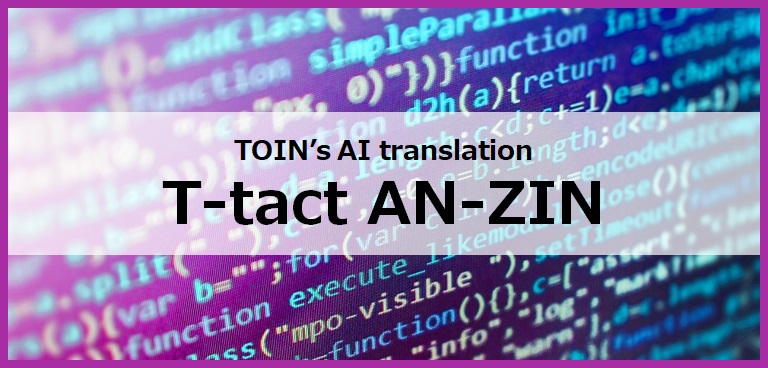Advantages of Post-Editing after Machine Translation

The accuracy of machine translation, including AI translation, has improved significantly in recent years. However, since machine translation is not yet perfect, a translation technique known as post-editing is employed, where a human editor improves the generated translation and completes it.
What exactly is post-editing? What are the benefits of using post-editing? How does it differ from human translation? Many business stakeholders might be curious about these aspects.
This article explains what post-editing is and the advantages of performing post-editing after machine translation.
What is Post-Editing?
Post-editing involves reviewing and refining translations generated by machine translation tools, including AI translation tools. The process includes checking for errors, omissions, and context alignment, and making the necessary corrections. Recently, due to the improved accuracy of machine translation tools, often only minimal adjustments are needed if the translation data is good. However, in cases where there are mistranslations or omissions due to context misalignment, a human editor needs to make additions and corrections. Accordingly, post-editing is the process of modifying machine-generated translations to make them suitable for their intended purposes.
Documents Suitable and Not Suitable for Post-Editing
Not all documents are suitable for post-editing after machine translation. Here are some examples that illustrate when post-editing after translation is suitable and when it is not suitable:
Suitable documents
- Sentences are grammatically correct and concise
- No need to take cultural background into account
- Translation is context-independent or other information is available
- Standardized phrases and terminologies from specific fields
- Sufficient translation data already exists
Unsuitable documents
- Sentences are grammatically incorrect or lengthy
- Localization needs to take cultural background into account
- Translation is context-dependent without other information available
- Highly creative elements (poetry, novels, advertising copy)
- Specialized terminology and expressions unique to specific fields (not translated with a specialized engine)
The suitability of post-editing depends on the accuracy of the machine translation. Highly accurate machine translations mean quicker post-editing, while those with poor accuracy or requiring extensive corrections mean post-editing will be time-consuming, potentially rendering it just as time-consuming as human translation.
Advantages and Disadvantages of Post-Editing
The post-editing process follows after machine translation. Let’s explore the advantages and disadvantages of combining machine translation with post-editing.
Advantages
- Using machine translation reduces translation time by requiring editing only where necessary
- Increases efficiency compared to fully human translation due to the speed of machine translation
- Flexibly enables accuracy and time required to be determined based on the objective and deadline
Disadvantages
- Requires understanding of the unique characteristics of machine translation, such as its weak areas and its omissions
- Low translation accuracy requires extensive effort and time to fix, negating the time-saving benefits of post-editing
- Takes effort to set the finishing level, such as full post-editing and light post-editing
Understanding these advantages and disadvantages when using post-editing after machine translation will help you determine whether to use post-editing or human translation.
International Standard for Post-Editing: ISO 18587
There is an international standard for post-editing called "ISO 18587". Released in April 2017, it is a relatively new standard.
In 2015, the "ISO 17100” international standard was established to guarantee translation quality. As the use of machine translation increased, the need for a post-editing standard emerged, leading to the introduction of ISO 18587.
Post-editing does not require any specific qualifications as long as the translator has the necessary skills, experience, and qualifications, but in practice, knowledge of post-editing for machine translation is essential.
When requesting post-editing, it is advisable to check if the translation service provider is certified for ISO 17100, if it declares compliance with ISO 18587, and if it has experienced post-editors available.
TOIN’s Post-Editing Services
TOIN is certified for ISO 17100 compliance and offers custom post-editing services, from light to full post-editing, performed by experienced post-editors with extensive translation and post-editing knowledge.
TOIN's high-quality full post-editing services based on the ISO 18587 international standard for post-editing rapidly increases the accuracy of machine-generated translations.
If you are looking for high-quality post-editing services, please contact TOIN.
Summary
TOIN provides comprehensive translation services, including document and video translation and post-editing, offered by professional translators with a long-standing history in the industry. For inquiries about AI machine translation tools and translation services, or translation in general, feel free to consult TOIN.

Click here for more information about TOIN's AI translation service, T-tact AN-ZIN®:

▶About the Author
TOIN Corporation Marketing Department
Hiromi Ishikawa
Joined TOIN Corporation in 1990 and was engaged in the production of manuals. Her wide range of duties include everything from transcribing Japanese manuscripts to directing the production of multilingual manuals.
From 2002, her main focus has been on localization project management, and she has been responsible for facilitating many of the company's major projects. Since 2009, she has been working in the Marketing Department, where she has been involved in marketing as well as advertising and public relations activities. She has been a member of the Board of Directors of the Japan Translation Federation and the Asia-Pacific Machine Translation Association since 2018.









